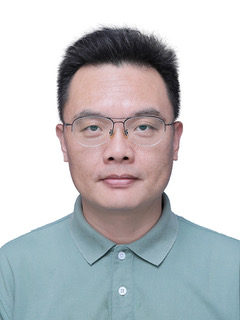Title: Professor
Country/Region: China
Period: 2022/11/1-2023/2/28
Theme: Collaborative research on Heat Flow of Marginal Seas in Western Pacific
Host: Makoto YAMANO
Introduction: I am a Professor of Marine Geology and Geophysics in the School of Geography and Ocean Science at Nanjing University. My research interests focus on thermal geophysics and its applications, including heat flow, thermal structure and rheology of the lithosphere, and thermal regime of the sedimentary basins, to decipher the tectono-thermal process of major geological events or provinces. I got my B.S. and Ph.D. in Geology at Nanjing University in 1999 and 2004, respectively. After two years of postdoc research, I joined the School of Geography and Ocean Science at Nanjing University in 2006. From 2013 to 2014, I was a visiting scientist at the Lamont-Doherty Earth Observatory (LDEO) of Columbia University, where I investigated the heat flow of the South China Sea. From October 2016 to January 2017, I was a research associate in Geophysics at the Seismological Laboratory of California Institute of Technology (Caltech), USA. During my stay at ERI, I would like to work with Professor Makoto Yamano on Heat flow and thermal structure of the marginal seas in western Pacific area.
Research Report:
Research Summary
During my 4-month stay at ERI from 1 November 2022 to 28 February 2023, I mainly focused on
the heat flow and thermal structure of the marginal seas in Western Pacific area, cooperated with
Professor Makoto Yamano. We compiled the updated heat flow data available from in and around
Japan and that from China, with the existing data for other areas from the IHFC heat flow database,
to re-visit the heat flow pattern in this area. The heat flow varies much among the marginal seas
(e.g., the Okhotsk Sea, Japan Sea, Okinawa Trough and South China Sea), indicating their different
ages and thermal processes. While the subduction zones exhibit similar geothermal patterns, with
relatively low heat flow in the fore-arc regions, extremely high but variable heat flow in the volcanic
arcs, and generally high heat flow in the back-arc regions. High heat flow anomalies are observed
within the marginal seas, as a result of fluid circulation and recent volcanic activities. Thermal
structure analysis of the lithosphere demonstrate that high temperature and large heat flow in the
back-arc regions can be attributed to the heat contributions from the mantle. The heat flow (Q) verse
age (t) relation for marginal seas in Western Pacific area can be roughly expressed by Q(t)=585.8 t-
1/2. It seems that this Q-t relation for marginal seas does not significantly differ from that for oceanic
basins. However, given the uneven coverage in heat flow data and vagueness in crustal age, this
expression needs to be confirmed in further study. The preliminary results would be presented at the
IUGG meeting to be held in Berlin in this July. In addition, with the kind arrangement of Professor
Yamano, I also visited some Japanese geothermal colleagues for exchanging ideas and potential
collaborative research in future, including Dr. Shusaku Goto of Geological Survey of Japan (GSJ),
Dr. Akiko Tanaka of National Institute of Advanced Industrial Science and Technology (AIST), and
Dr. Hideki Hamamoto of the Center for Environmental Science in Saitama. Finally, I would like to
thank Professor MakotoYamano and the International Office, for their kind host and help during my
visit.
During my 4-month stay at ERI from 1 November 2022 to 28 February 2023, I mainly focused on
the heat flow and thermal structure of the marginal seas in Western Pacific area, cooperated with
Professor Makoto Yamano. We compiled the updated heat flow data available from in and around
Japan and that from China, with the existing data for other areas from the IHFC heat flow database,
to re-visit the heat flow pattern in this area. The heat flow varies much among the marginal seas
(e.g., the Okhotsk Sea, Japan Sea, Okinawa Trough and South China Sea), indicating their different
ages and thermal processes. While the subduction zones exhibit similar geothermal patterns, with
relatively low heat flow in the fore-arc regions, extremely high but variable heat flow in the volcanic
arcs, and generally high heat flow in the back-arc regions. High heat flow anomalies are observed
within the marginal seas, as a result of fluid circulation and recent volcanic activities. Thermal
structure analysis of the lithosphere demonstrate that high temperature and large heat flow in the
back-arc regions can be attributed to the heat contributions from the mantle. The heat flow (Q) verse
age (t) relation for marginal seas in Western Pacific area can be roughly expressed by Q(t)=585.8 t-
1/2. It seems that this Q-t relation for marginal seas does not significantly differ from that for oceanic
basins. However, given the uneven coverage in heat flow data and vagueness in crustal age, this
expression needs to be confirmed in further study. The preliminary results would be presented at the
IUGG meeting to be held in Berlin in this July. In addition, with the kind arrangement of Professor
Yamano, I also visited some Japanese geothermal colleagues for exchanging ideas and potential
collaborative research in future, including Dr. Shusaku Goto of Geological Survey of Japan (GSJ),
Dr. Akiko Tanaka of National Institute of Advanced Industrial Science and Technology (AIST), and
Dr. Hideki Hamamoto of the Center for Environmental Science in Saitama. Finally, I would like to
thank Professor MakotoYamano and the International Office, for their kind host and help during my
visit.
View All
Fiscal Year: 2022
Fiscal Year: 2022


